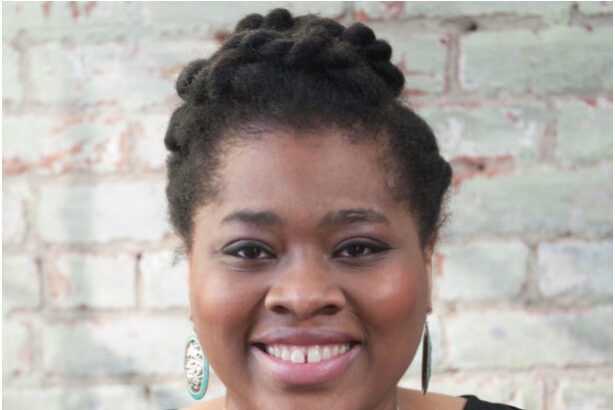Here at Top Comments we welcome longtime as well as brand new Daily Kos readers to join us at 10pm Eastern. We strive to nourish community by rounding up some of the site’s best, funniest, most mojo’d & most informative commentary, and we depend on your help!! If you see a comment by another Kossack that deserves wider recognition, please send it either to topcomments at gmail or to the Top Comments group mailbox by 9:30pm Eastern. Please please pleaseinclude a few words about why you sent it in as well as your user name (even if you think we know it already :-)), so we can credit you with the find!
In early June, hubby and I visited Portland, Oregon. We had a weekend event to attend, but we came a couple days early to have enough time to visit friends and see some sights. We had housing for the event in the home of a local family, but for the days before the event, we stayed at an AirB&B off of Mississippi Avenue. The Mississippi Avenue corridor is an up-and-coming neighborhood of funky shops and diverse restaurants, and we had a pleasant time there.
Across the street from our AirB&B (which was a few blocks away from Mississippi Ave.) I saw the dead end signs with an old truck parked next to it. As an amateur photographer, I look for striking or amusing images to photograph, and I felt this qualified. The amusing part, I thought, was that there were not one, but two dead ends at this intersection. I submitted this photo to the recent KOS Art Expo.
So where is the racism in this photo? It’s crucial to acknowledge the fact that Portland, OR, the whitest city in the nation, has a past featuring mistreatment and exclusion of racial minorities, particularly Black people. Indeed, the State of Oregon was admitted to the Union in 1859 with a “Black exclusion law.” The founders of the territory, and later, the state, envisioned it as a “paradise” for white people. Under this law, Black people were not permitted even to live in the state. This law remained on the books until 1926. With this kind of background, it should not come as a surprise that the city of Portland would enact racist housing policies, where Black people were only permitted to live in certain neighborhoods.
When we finally got to the home of our host, she explained to us that Mississippi Street was the main street in the district where Black people were permitted to live. At that point, I immediately understood why there were two dead ends across the street from our AirB&B. Beyond the ivy-topped wall you see on the left in the photo is Interstate 5, the freeway that runs along the west coast from Canada to Mexico. When the time came to place the path of I-5 through the city of Portland, where do you think they chose to place it? That’s RIGHT! They chose to slice the Black neighborhood in two, which resulted in severing both of the intersecting streets in the photo, creating two dead ends. I don’t know for sure, but I’m willing to bet that the walls that reduce freeway noise are relatively new, meaning that the residents of this neighborhood were forced to tolerate the noise of a major freeway in their back yards for many years. Of course, the fact that the neighborhood has become trendy means that the original Black residents were displaced by gentrification. (We saw a few Black people in the neighborhood, but by no means was it a Black neighborhood anymore.)
When I took this photo, it never occurred to me that what I thought of as an arresting image was created by racist housing and transportation policies. This residue of structural racism is embedded in plain sight not just in Confederate monuments, but in much more subtle ways. Another example was Baltimore’s “spite wall,” which I wrote about when it was demolished. Though I well remember driving along it for many years, I never understood that the very existence of that wall was to exclude the students of Morgan State University, an HBCU, from the adjacent white neighborhood. I’m sure there are countless other examples.
[h/t to brillig for suggesting I write about this.]
Comments are below the fold.
TOP COMMENTS
Brillig’s ObDisclaimer: The decision to publish each nomination lies with the evening’s Diarist and/or Comment Formatter. My evenings at the helm, I try reeeeallllyy hard to publish everything without regard to content. I really do, even when I disagree personally with any given nomination. “TopCommentness” lies in the eyes of the nominator and of you, the reader – I leave the decision to you. I do not publish self-nominations (ie your own comments) and if I ruled the world, we’d all build community, supporting and uplifting instead of tearing our fellow Kossacks down. Please remember that comment inclusion in Top Comments does not constitute support or endorsement by diarist, formatter, Top Comments writers or DailyKos. Questions, complaints or comments? Contact brillig.
From rflctammt:
I think this comment by noofsh in the AP story about the gunman is important because it cuts right through all the bullshit and speculation about who why what done what regarding the attempted assassination:
“Sorry but I really don’t care about what motivates acts of madness. Isn’t it clear that what enables this sort of thing is allowing people to own weapons of war?”
(It was the first comment.)
From wasatch:
I am sending you this comment by RenaRF
(https://www.dailykos.com/users/renarf)
https://www.dailykos.com/comments/2254078/89052998#comment_89052998
This is the best comment I have read since/about the Trump rally shooting.
Please consider for Top Comments.
Thank you,
wasatch
TOP MOJO
Top Mojo for yesterday July 13, first comments and tip jars excluded. Thank you mik for the mojo magic! For those of you interested in How Top Mojo Works, please see his diary on FAQing Top Mojo.



